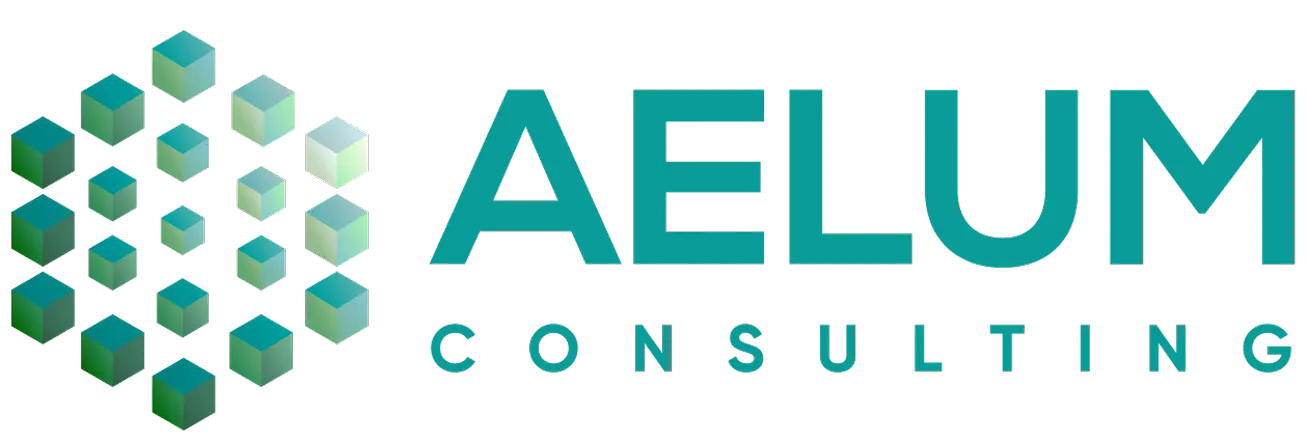December 31, 2026, marks the official end of support for Cherwell. With barely a year left, organizations can no longer view this as a routine upgrade. It is a firm deadline that will affect system stability, security, and compliance. At the same time, it also presents a timely opportunity to reassess what the business truly needs from its IT service management platform for the next decade.
For most enterprises planning their move, two platforms stand out: ServiceNow and Jira Service Management. Both are established and Gartner-recognized, yet they differ significantly in architecture, scalability, and long-term value.
This blog compares Cherwell, ServiceNow, and Jira to help you understand the strongest Cherwell alternatives, and why ServiceNow remains the most future-ready choice for post-EOL migration.
Understanding Your Options: Cherwell vs Jira vs ServiceNow
1. Cherwell
It is a flexible ITSM platform designed to help organizations manage and automate core service processes. Its appeal largely comes from a “configure-don’t-code” model that allows teams to tailor workflows without deep technical expertise.
What Cherwell offers:
- ITIL-aligned modules for incident, problem, change, and request management.
- A configurable workflow engine to automate repetitive tasks.
- A unified self-service portal for end users.
- Dashboards and reporting for real-time visibility.
- Deployment flexibility across on-prem, cloud, or hybrid environments.
For many enterprises, Cherwell served as a central hub for ticketing and service delivery, and its extensibility made it useful beyond IT.
2. ServiceNow
It is an AI-first, workflow-driven platform designed to connect people, processes, and systems across the enterprise. Its ecosystem spans IT Service Management, IT Operations, Customer Service, and Governance, Risk & Compliance, giving organisations one platform to run end-to-end operations.
With built-in GenAI, predictive intelligence, and AI Agents, ServiceNow turns manual, ticket-heavy tasks into proactive, automated, and intuitive experiences that scale across the business.
What ServiceNow offers:
- A unified, cloud-native platform powered by AI.
- Comprehensive solutions across IT, employee experience, customer experience, and governance.
- Low-code/no-code development to build and extend workflows quickly.
- Enterprise-grade scalability, security, and governance for complex environments.
ServiceNow brings everything into one holistic system, helping organisations move away from fragmented tools and toward faster, more connected, future-ready operations.
3. Jira
It is a modern service-management platform built to help IT, operations, and business teams deliver high-velocity support across the enterprise. It enables teams to receive, track, manage, and resolve requests, from incidents and changes to employee requests, within one unified system.
What Jira offers:
- Unified platform for service requests, incidents, changes, and business-team support
- Ready-to-use workflows with AI-driven automation
- Smooth collaboration between IT, development, and operations
- Scalable architecture with deep integrations across the Atlassian ecosystem
- In essence, Jira Service Management brings service teams together in one system, enabling faster, more visible, and collaborative work.
Before You Migrate: Ensure Smooth Cherwell Data Transition
A successful transition away from Cherwell begins with establishing a strong data foundation. Exporting configurations, service records, historical tickets, and relationship data in a clean, validated format enables data export seamlessly, reduces migration gaps, and ensures your next ITSM platform can replicate workflows with full accuracy and continuity.
The Decision Table: Comparing Cherwell, ServiceNow, and Jira
| Dimension | Cherwell | ServiceNow | Jira |
| Customization & Flexibility | Highly configurable, low-code model gives great control. | Exceptionally flexible with low-code/no-code tooling and a scalable architecture, offering deep config for complex, cross-functional workflows while maintaining consistency across the enterprise. | Flexible too, particularly well-aligned with agile teams; templates make it easy to set up and adapt. |
| Scalability & Architecture | Supports on-prem and cloud; built for organizations that want deep config but may struggle with a large scale without more investment. | Cloud-native, globally scalable platform built to support enterprise-wide operations across IT, HR, security, customer service, and more. | Scales well within the Atlassian ecosystem, though very large service operations may need multiple add-ons. |
| Automation & Intelligence | Strong workflow automation but limited compared to newer AI-centric platforms. | Industry-leading: advanced automation, built-in GenAI, predictive intelligence, and AI Agents that streamline operations end-to-end. | Good rules-based automation with strong ecosystem plugins; AI capabilities growing but not as comprehensive as ServiceNow. |
| Service Management Capabilities | Mature ITIL-aligned modules including incident, change, and CMDB. | Complete enterprise service suite: ITSM, ITOM, HRSD, CSM, and GRC, offering end-to-end digital workflows on a single platform. | Strong ITIL support with incident, problem, change, asset management plus service desks for HR, marketing, etc. |
| Integrations | Flexible, but integrations are required for additional setup and custom work. | Extensive integration ecosystem with hundreds of native connectors, IntegrationHub spokes, and API-driven extensibility. | Good integration with Atlassian tools, plus a good marketplace for third-party apps. |
| Ease of Use / Onboarding | Configurable but learning complex workflow modeling takes time. | Powerful and highly structured. Initial setup may need specialized resources, but provides a consistent, enterprise-ready user experience at scale. | Intuitive for teams already using Atlassian tools; easy to start but enterprise service teams may need multiple apps or configurations. |
| Cost & Total Cost of Ownership | Predictable pricing with relatively lower upfront investment. | Value-driven pricing model aligned with its broad, enterprise-grade capabilities. Organizations often see strong long-term ROI through platform consolidation, automation, and reduced tool sprawl. | Flexible pricing suited for teams already in the Atlassian ecosystem; costs can rise as organizations add plugins for advanced service management. |
| Ease of Data Export | Supports exports via reports, APIs, and database access, though it may require technical expertise.
|
Easy data export through reporting, lists, APIs, and Integration Hub. Strong governance ensures secure, controlled data movement at a scale. | Smooth exports for issues and reports in common formats (CSV, JSON), especially when paired with Jira Software and Confluence. |
| Vendor Support | Support ends December 2026, requiring customers to plan their transition proactively to avoid operational risks. | Ongoing, enterprise-grade support with clear roadmap visibility, strong documentation, and continuous platform innovation. | Active support with a cloud-first roadmap. Provides consistent assistance, particularly for teams already operating within the Atlassian environment. |
| Upgrades & Innovation Cadence | Limited upgrades with incremental enhancements; innovation has slowed following the end-of-life announcement. | Two major platform upgrades annually (e.g., Yokohama and Zurich), bringing continuous modernization, AI advancements, and new enterprise workflows. | Frequent cloud updates and iterative improvements. Good pace of innovation within the Atlassian cloud ecosystem. |
Why ServiceNow Should Be Your Post-Cherwell Preferred Choice?
ServiceNow stands out as the best option for Cherwell users as it delivers true enterprise scalability, AI-powered automation, and a cloud-native architecture built for future growth. Gartner consistently names ServiceNow as the ITSM leader for its ability to unify IT, HR, security, and operations, driving ROI for even the most complex organizations. Its deep integration ecosystem and predictive workflows eliminate disruption during migration, making it the safest, smartest path forward post-Cherwell.
Access our detailed Cherwell to ServiceNow migration guide and learn how to transition with confidence.
Start Your Migration Journey with Confidence
As Cherwell approaches its end of life, the need to migrate is no longer a future concern; it’s a priority. Jira and ServiceNow both offer viable paths, but they serve different types of organizations.
For organizations seeking long-term stability and a future-ready service backbone, ServiceNow emerges as the stronger choice. And with Aelum as your ServiceNow implementation partner, the migration process becomes structured, accelerated, and low-risk. Aelum helps organizations modernize their workflows, preserve business continuity, and provides more value from the platform from day one.
Your next ITSM platform decides the foundation for how your enterprise will operate beyond 2026. Connect with our experts at Aelum to start your migration journey with confidence.
Frequently Asked Questions (FAQs)
Who is the best Cherwell alternative for non-IT teams (HR/Facilities)?
ServiceNow is the strongest alternative for non-IT teams because it offers dedicated enterprise workflows for HR, Facilities, Legal, Procurement, and more, all on a single platform.
Jira also supports non-IT service teams, but it is better suited for agile, fast-moving departments rather than enterprise-wide service delivery.
Is there a tool that feels similar to the Cherwell dashboard?
ServiceNow provides the closest experience, with customizable dashboards, forms, and workspace views that mirror Cherwell’s flexibility but with more modern UI and automation. Jira offers clean, simple dashboards but may feel different from Cherwell’s highly model-driven interface.
How does Asset Management (ITAM) differ from Cherwell CAM?
Cherwell CAM focuses primarily on hardware and software tracking with basic discovery.
ServiceNow ITAM offers full lifecycle management, advanced discovery, normalization, compliance tracking, and automation across hardware, software, and cloud assets. Jira supports asset management through extensions like Assets, but its scope is lighter compared to enterprise-grade ITAM platforms.
Why should we trust ServiceNow or Jira over Ivanti Neurons?
ServiceNow and Jira offer larger ecosystems, stronger roadmaps, and broader community adoption. ServiceNow leads with AI-first workflows and enterprise-grade capabilities, while Jira offers simplicity and speed within the Atlassian ecosystem. Ivanti Neurons is improving, but its roadmap and ecosystem are more limited, especially for organizations seeking long-term scalability and continuous innovation.



































